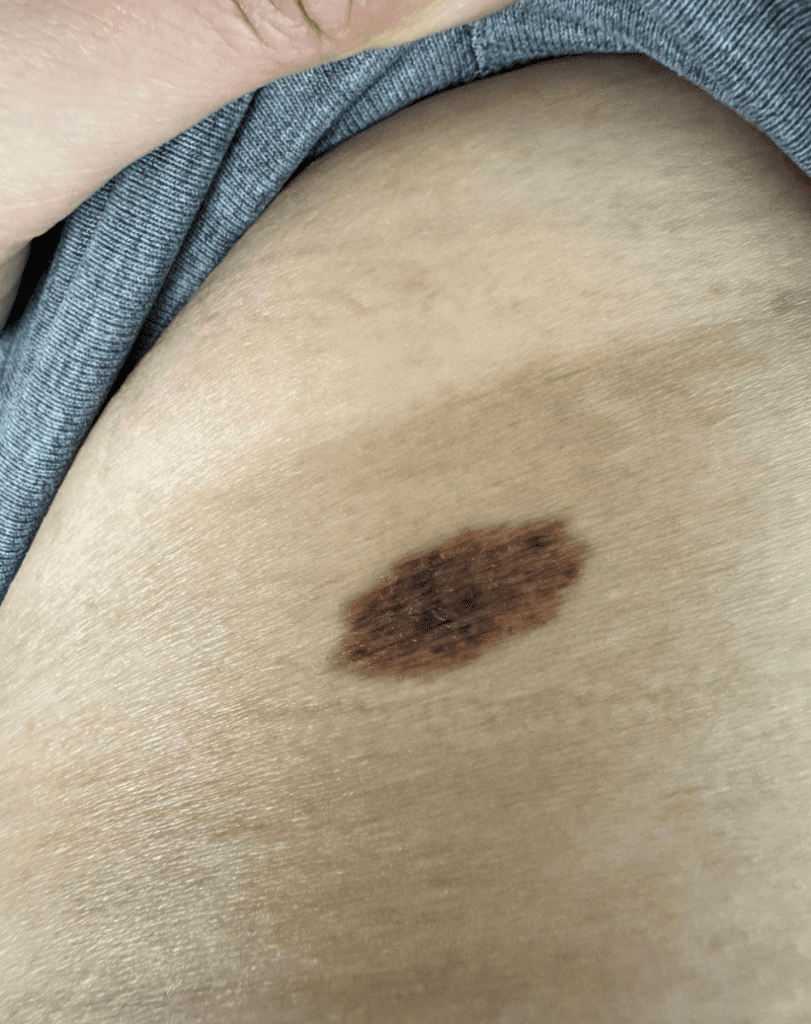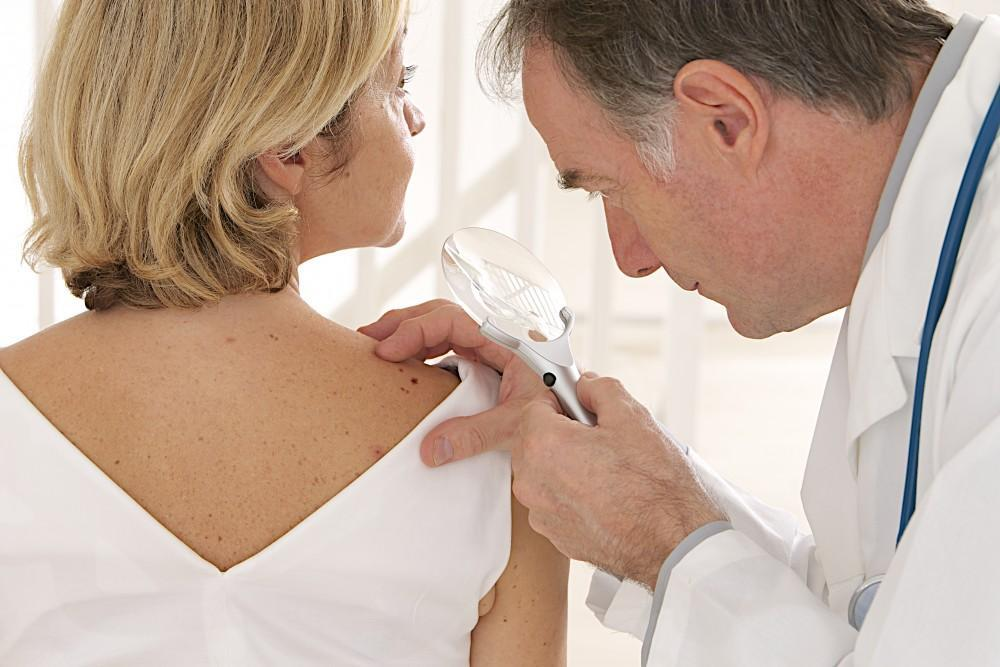Noticing a mole with patchy dark spots can be unsettling. We’re often told to keep an eye on our moles for any changes, but it can be hard to know which changes are worrisome and which ones aren’t. This topic is important because an irregular mole may indicate skin cancer, which, when caught early, is highly treatable. Understanding what to look out for and when to seek medical advice can make all the difference in protecting your skin and health.

In this article, we’ll cover the key signs to monitor, the steps to evaluate any mole with the ABCDE method, and how to take proactive measures to keep your skin safe.
Understanding What Makes Moles Abnormal
Moles are clusters of pigmented cells and are usually harmless. However, certain types of moles can be atypical or “dysplastic,” meaning they look different from regular moles. These types can sometimes be linked to a higher risk of melanoma, a serious form of skin cancer.
If you’ve noticed patchy dark spots on your mole, it may be an indicator that you should take a closer look. Changes in color, size, or shape of a mole can be a signal that something is off. It’s wise to familiarize yourself with these changes and understand when it’s time to get professional advice.
The ABCDEs of Moles: A Simple Guide to Evaluate Changes
The American Academy of Dermatology recommends using the ABCDE method as a guide for evaluating moles. This method helps you assess specific characteristics to determine if a mole may be cause for concern. Here’s how each aspect of the ABCDEs can help you evaluate your mole:
A – Asymmetry
Healthy moles are typically symmetrical. If you were to draw a line through the middle of the mole, both sides should match. If one half is noticeably different from the other, this asymmetry could be a red flag.
B – Border
Take a close look at the edges of your mole. Are the borders smooth, or are they irregular and uneven? Moles with blurry, jagged, or scalloped borders are worth keeping an eye on, as irregular borders may indicate an atypical mole.
C – Color
Healthy moles are usually one consistent color, such as tan, brown, or black. If you notice multiple colors within a single mole—especially darker or patchy areas—it could be a sign that the mole is changing and should be evaluated.
D – Diameter
Size matters when it comes to moles. If a mole is larger than 6 millimeters (about the size of a pencil eraser), it’s wise to keep an eye on it. While some melanomas start smaller, larger moles with other abnormal characteristics are more likely to require attention.
E – Evolving
Perhaps the most critical characteristic is whether the mole is evolving or changing. Changes in size, shape, color, or texture over time can be a signal that the mole needs professional assessment. If it’s growing, changing color, or becoming raised, schedule a check-up with a dermatologist.

When to See a Doctor About Your Mole
Not every unusual-looking mole is dangerous, but certain symptoms should prompt a visit to your doctor or dermatologist as soon as possible. Here are signs that it’s time to seek professional help:
- Itching, Tenderness, or Pain: If your mole starts to feel irritated, it could indicate an underlying issue.
- Oozing or Bleeding: Moles that ooze, bleed, or form a crust may require further examination, as these symptoms can sometimes be linked to cancerous changes.
- New Moles Appearing After Age 20: Most people develop new moles in childhood and adolescence. If you’re over 20 and start noticing new moles, it’s a good idea to have them checked.
- Mole That Stands Out: Also known as the “ugly duckling sign,” a mole that looks significantly different from others may warrant attention, as it can be a clue to an atypical mole.

Preventative Measures for Monitoring Your Moles
Staying proactive about your skin health is one of the best ways to catch issues early. Regular self-examinations and visits to a dermatologist can help ensure that any changes are spotted promptly. Here’s a quick guide on how to take charge of monitoring your moles:
- Monthly Self-Exams: Make it a habit to inspect your skin once a month. Use a mirror to check areas that are harder to see, and don’t forget places like your scalp, the bottoms of your feet, and under your nails.
- Annual Dermatologist Visits: A yearly visit to a dermatologist for a full-body skin check can provide peace of mind and early detection of potential issues.
- Practice Sun Safety: Overexposure to the sun can increase the risk of skin cancer. Make it a habit to wear sunscreen, seek shade, wear protective clothing, and avoid peak sun hours to protect your skin.
- Document Your Moles: Consider taking photos of your moles and keeping a record of any changes you notice over time. This can make it easier to track and share information with your dermatologist during check-ups.
Treatment Options for Atypical Moles
If your dermatologist suspects that a mole may be atypical or cancerous, they may recommend a biopsy. During a biopsy, a small tissue sample is taken from the mole and examined under a microscope. Depending on the results, your doctor may suggest additional treatment options:
- Excision: In cases where a mole is confirmed to be malignant or precancerous, it may need to be surgically removed to prevent further spread.
- Cryotherapy: For benign but bothersome moles, your doctor may suggest freezing them off with liquid nitrogen. This is typically a quick and simple procedure.
- Topical Treatments: Certain topical treatments can sometimes be effective for treating surface-level changes in the skin. Your doctor can recommend the best options based on your specific situation.

Conclusion: Take Control of Your Skin Health
While it can be nerve-wracking to find a mole with patchy dark spots, it’s essential to remember that not all changes are dangerous. Using the ABCDE method can help you stay on top of any developments and decide when to seek professional advice. Regular self-exams, annual dermatologist visits, and smart sun habits are key steps to ensuring you catch any skin changes early.
Remember, your skin health is worth the time and effort, and being proactive can make a difference in identifying potential issues before they become serious. Stay informed, stay vigilant, and prioritize your skin health—you’ve got this!


